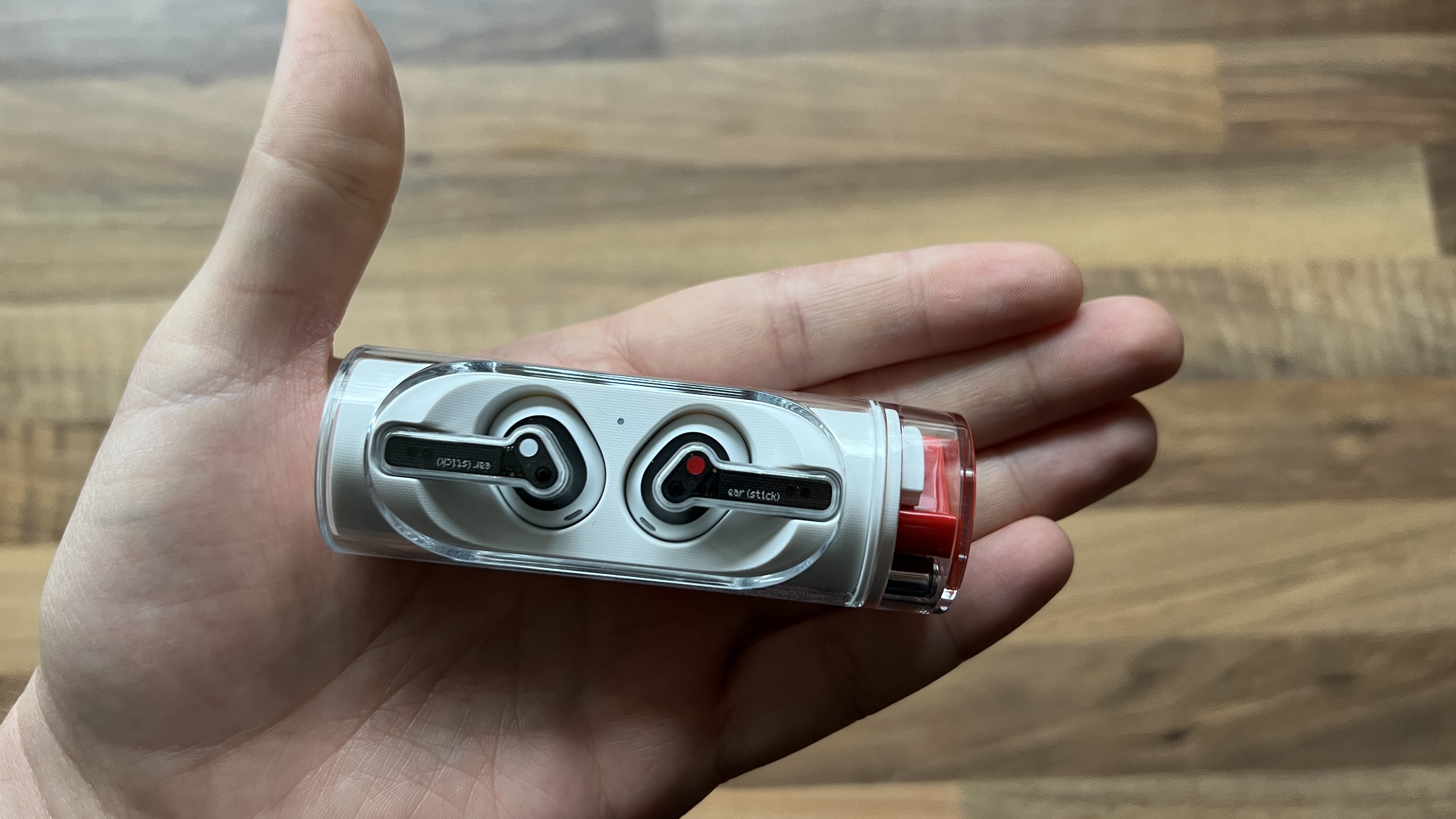Laptop Mag Verdict
The Nothing Ear (stick) is another solid entry into the company’s earbuds lineup, packing a uniquely divisive aesthetic and powerful sound into a less intrusive, half in-ear design. Unfortunately, it falls victim to all the common half in-ear problems.
Pros
- +
Detailed sound quality
- +
Clear call quality
- +
Responsive touch controls
- +
Impressive Bluetooth 5.3 range
- +
Easy-to-use app
Cons
- -
Divisive design
- -
No ANC
- -
No wireless charging
- -
Plenty of noise leakage
Why you can trust Laptop Mag
The Nothing Ear (stick) is not a sequel to the impressive Nothing ear (1), rather a spin off to hit an audience that prefers a less intrusive, half in-ear earbud for their listening needs.
But a spin off doesn’t always mean a simple copy and paste, as these come with a new cylindrical case design, improved drivers and new pinch-based touch controls — all in a lighter set of buds with better battery life.
So, what’s not to love? Well there are some things you should know before you buy
Nothing Ear (stick) availability and price
The Nothing Ear (stick) buds are available for $99 or £99. They are up for pre-order with the first stock drop coming November 4 on nothing.tech.
If you are thinking to yourself, “Isn’t that what the Nothing ear (1) cost?” then you would have been right until the recent staggering 50% price increase of the ear (1)s. It’s a bit of a heartbreaker, but such is the current state of inflation.
However, there is a silver lining — these do come in cheaper than their closest half in-ear competitor: the AirPods 3.
Nothing Ear (stick) design
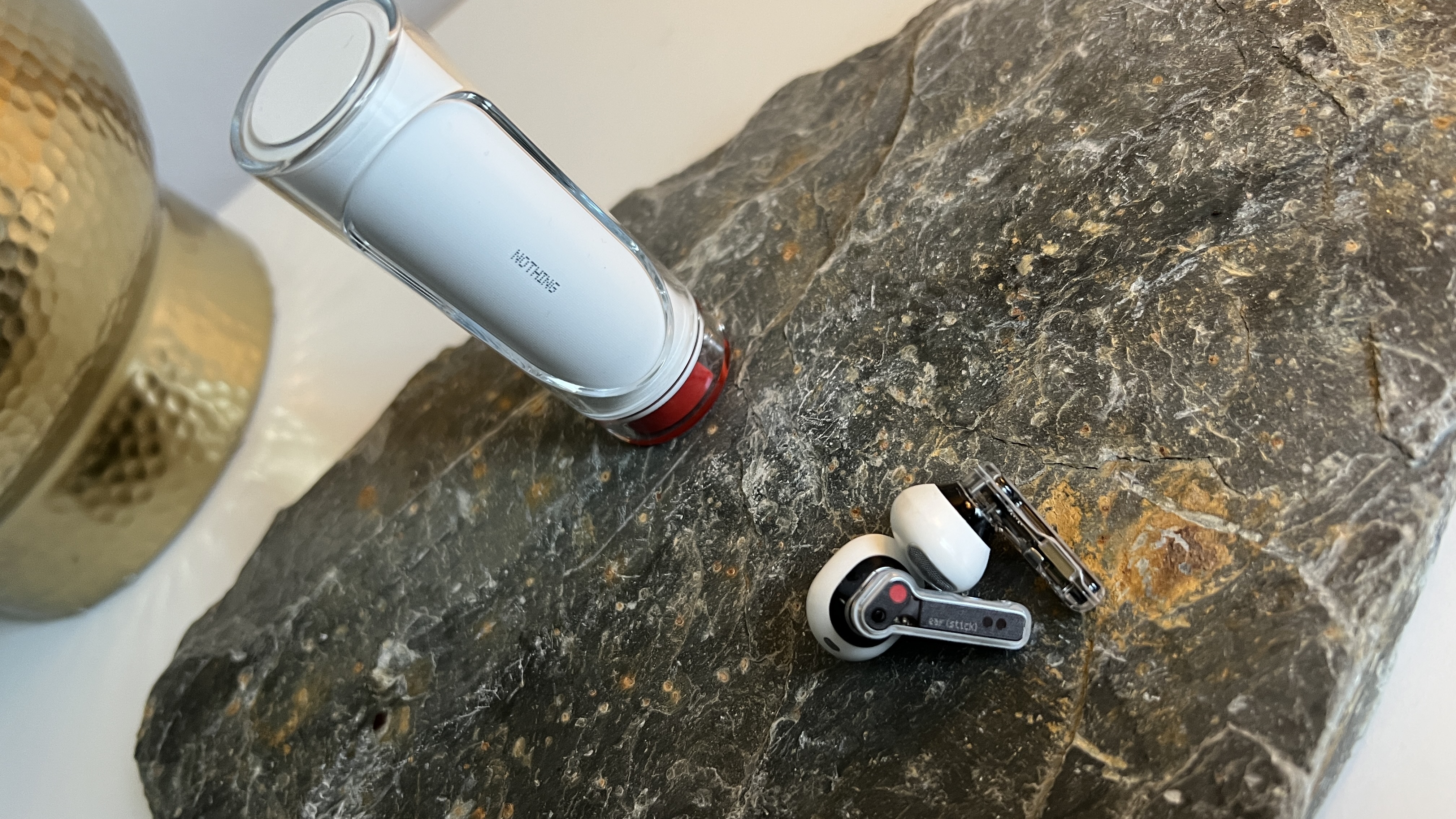
Nothing’s trademark transparent design is core to its aesthetic, across the ear (1) and the phone (1), and it absolutely continues here in a striking, eye-catching manner. Whether you like this approach or not is something you’ll have to decide for yourself; across all of the company’s tech, opinions have been more divided than marmite. You love it or hate it.
Sign up to receive The Snapshot, a free special dispatch from Laptop Mag, in your inbox.
Personally, I love it. The electronic components give off a retro chic mixed with futuristic flair, but the Ear (stick) feels all the more light and compact because of its key changes. The buds still have the same see-through stems, but with the absence of a rubberized tip, as is expected from a half in-ear bud.
In daily use, the lessened intrusion on your ear canal makes these comfortable over longer periods of time, but that lack of a secure fit means they are prone to falling out if you do anything more strenuous than walking. That being said, if you can manage jogging with these buds, you’ll benefit from their IP54 dust-and-water resistance rating.
Now, one of my favorite small details of the ear (1) was the small crater in the top corner of the case, which allowed me to spin them around in my hand like a technological fidget spinner. The Ear (stick) takes this to the next level with a case and mechanism unlike anything you’ve seen before.
The cylindrical container gives off a fashion, cosmetic-esque persona that to me (a smoker that managed to quit a long time ago) is reminiscent of a lighter. Plus, that grippy texture you see on the inside of the ear (1) case and the phone (1) is available to touch for the first time. This is the start of a strong tactile story, which peaks with the rotating action of opening the case.
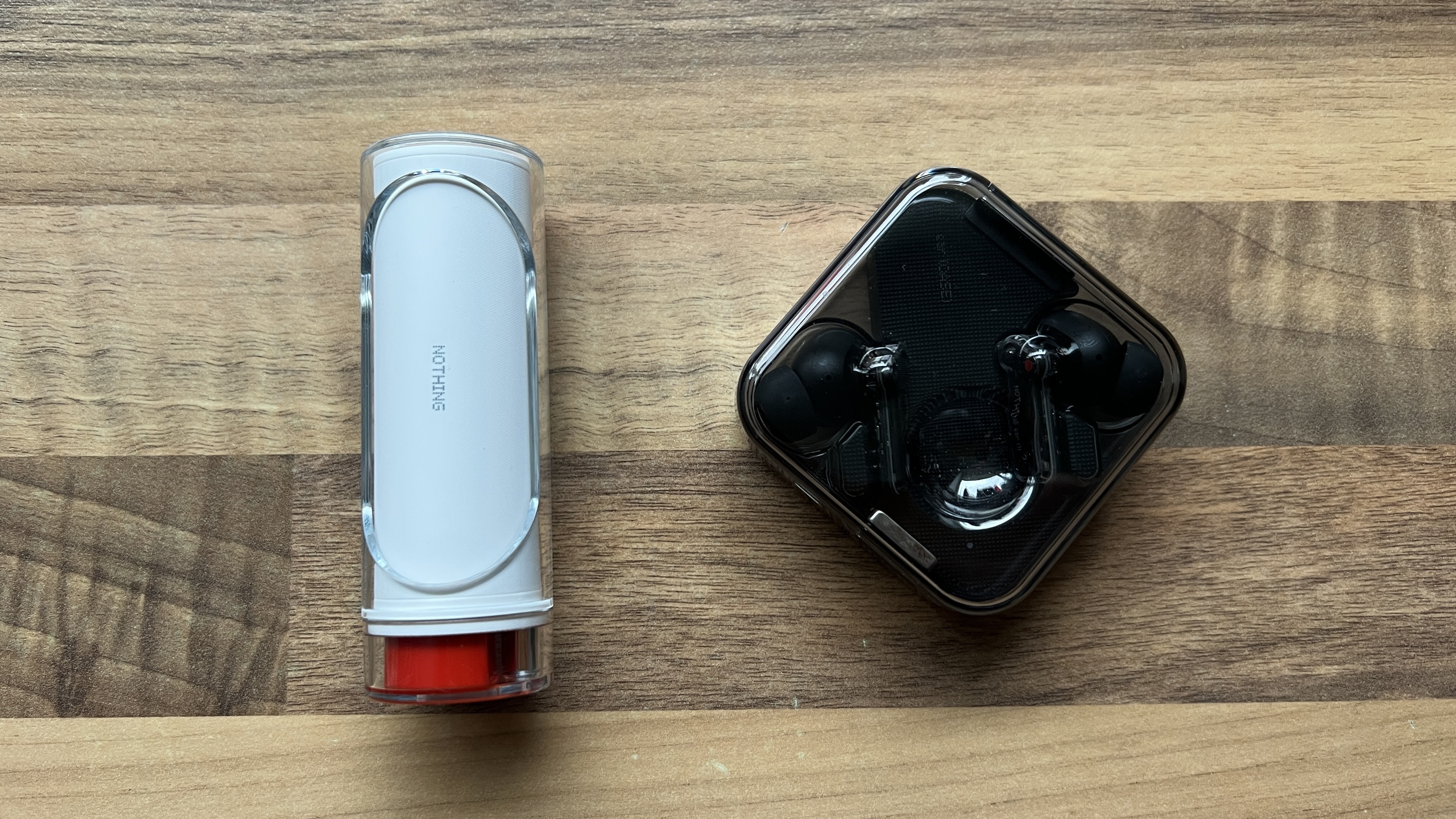

When I sat down with the Nothing team to talk about the earbuds, I didn’t realize just how furiously and addictively I was constantly rotating the case in my hand — listening to that satisfying click every time you open and close it, and the weightiness behind each smooth rotation. It’s perfect habitual fiddling fodder.
Going into specifics, the case design makes it far more pocketable than the large square slab of the ear (1), measuring in at 3.4 x 1.2 x 1.2 inches and weighing just 1.6 ounces. As for the buds themselves, they measure in at 1.2 x 0.7 x 0.6 inches and are a featherweight 0.15 ounces.
Comparatively, the AirPods 3 case is far smaller and lighter (1.8 x 2.1 x 0.8 inches, 1.3 ounces), but the bud comparisons do pip Apple to the post (1.2 x 0.7 x 0.8 inches, 0.15 ounces).
Once again, there’s no middle ground as to thoughts about the look and feel of these buds, but I’m always a fan of the transparency.
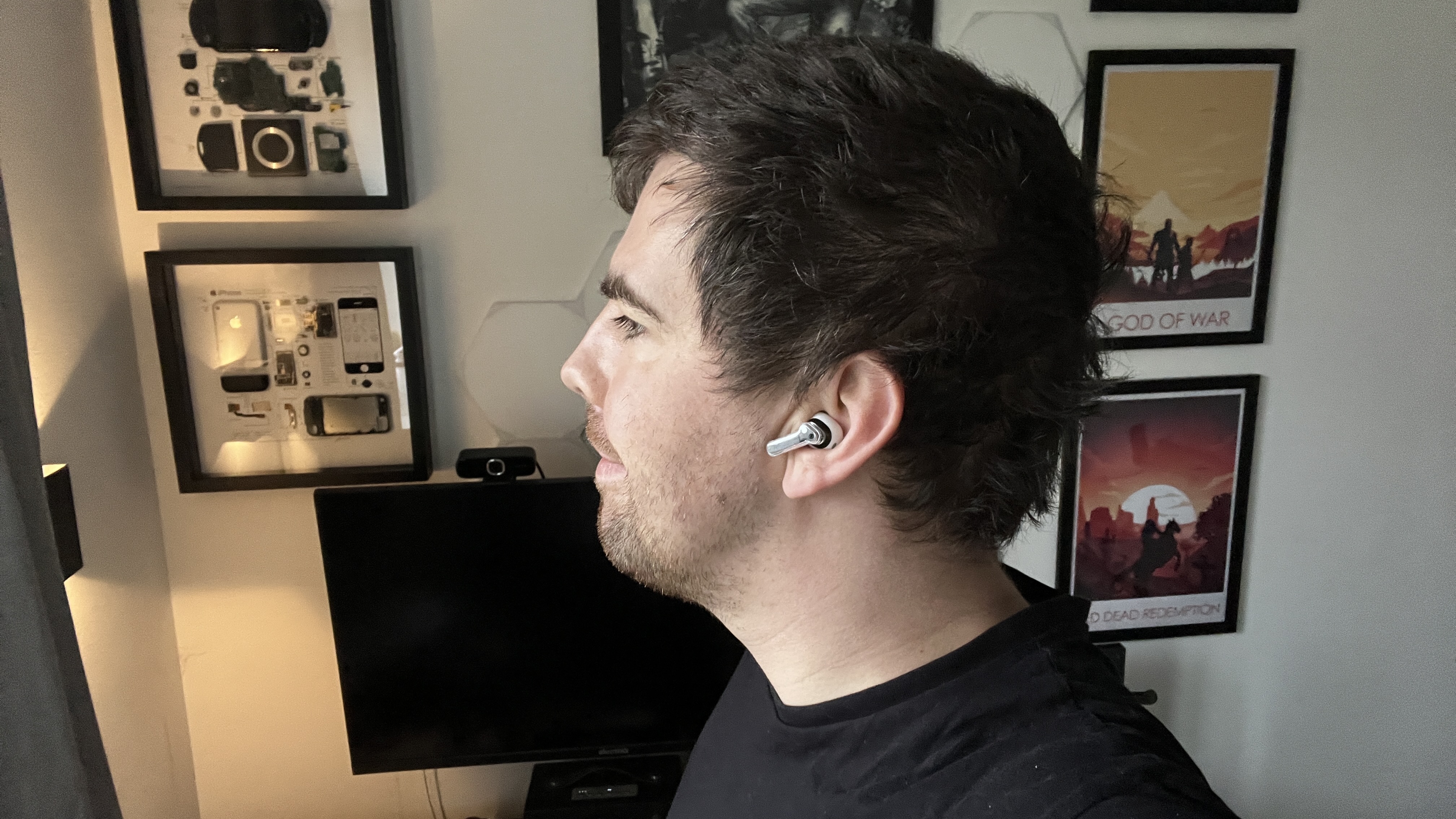
Nothing Ear (stick) controls and digital assistant
The Nothing Ear (stick) gets a different control system to the touch surfaces of the ear (1) — namely, pinch interactions rather than taps and swipes. These certainly do the job of ensuring there are no unintended touches, but I do miss the swipe to alter the volume. It makes the act of making music louder or quieter a longer, more laborious process.
Once you’ve got the hang of the patterns of taps and holds, it’s a cinch to use with my iPhone 13 Pro; I also paired it with my M1 MacBook Pro, and it showed similarly impressive results. Plus, you can customize touch controls in the X app.
Nothing Ear (stick) audio quality
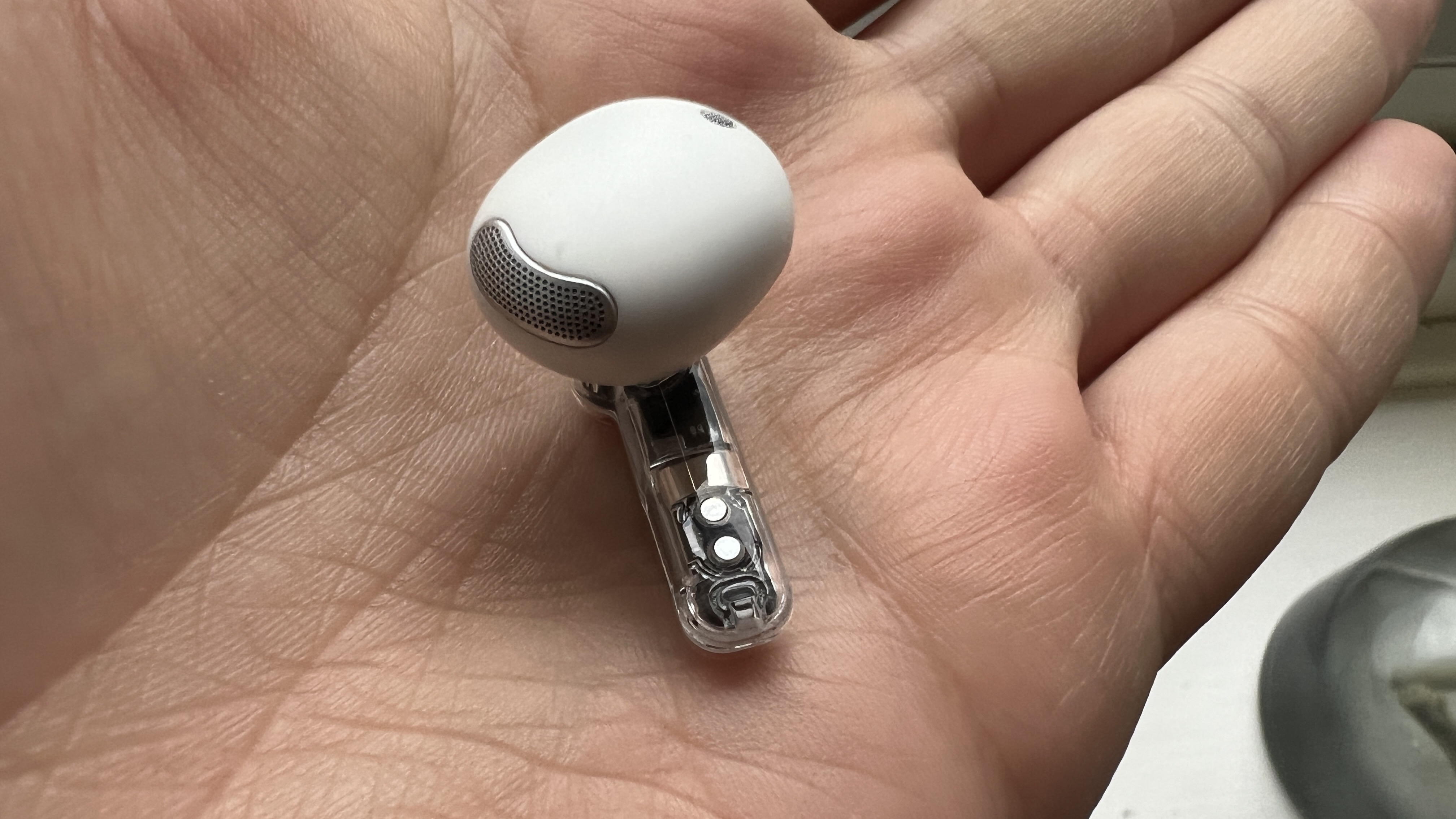
The audio quality is where things start to get a little murky. They sound great, but by virtue of being half in-ear, you can only really appreciate it in a limited set of circumstances.
Nothing starts strong with 12.6mm drivers that deliver punchy sound with impressive bass and clarity in the highs and mids — all of which is fully customizable in the X app.
The various instruments during the cacophonic orchestral uprising section in “A Day in the Life” by The Beatles sounded clean and clear. On many other buds at this price, these 30 seconds are a mess as the EQ tries to figure out what it's trying to play. But with the Nothing Ear (stick), everything sounded pure.
Not only that, but more modern genres get a boost from this, too. Frank Ocean’s “Lost” adds a warmth to the vocalists' lower tones in the chorus, allowing the higher pitches to fly. Shikari’s “The Great Unknown” is just as dramatic with zero distortion.
So far, so good, but only if you are indoors. There’s a lot of noise leakage here, which does affect performance anywhere outside of your home. Nothing does tackle this in a couple of ways with drivers that don’t distort at high volumes, and the Bass Lock technology that measures the space in your ear adjusts the lows to keep providing that warmth.
While it’s all lovely stuff to have on paper, the fact of the matter is you’re getting a merged listening experience with everything around you, which can get distracting in busier situations.
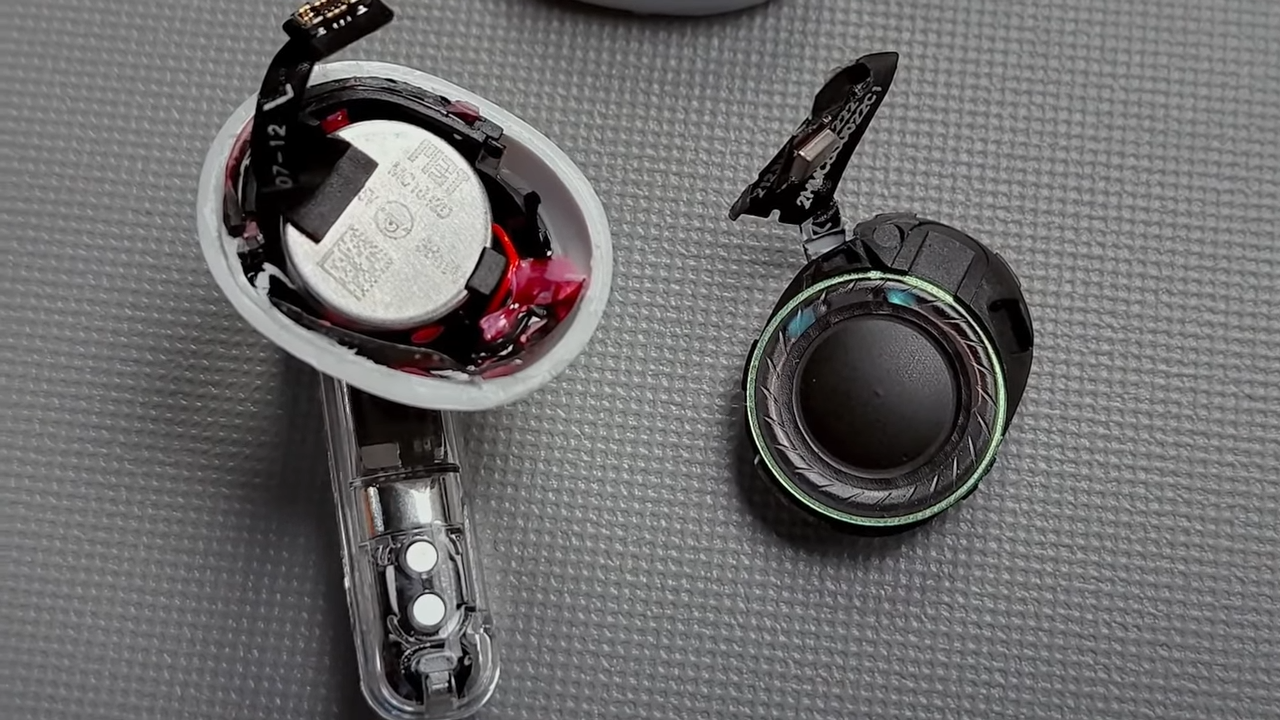
Nothing Ear (stick) app
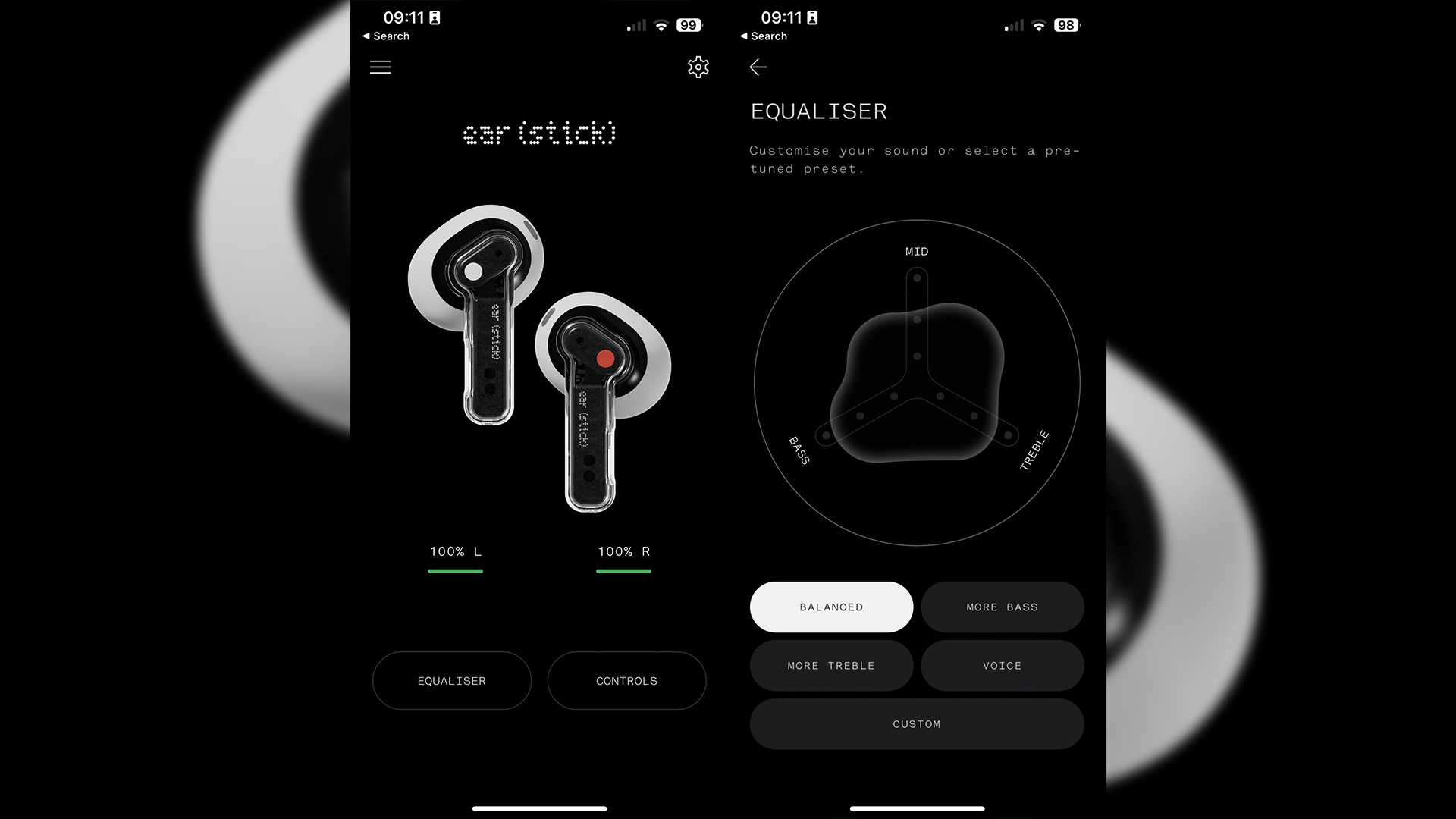
Now that there are two separate Nothing earbuds available, having an ear (1) app makes no sense, so say hello to the Nothing X app.
All the essential features are there: customizable touch controls, a “Find my earbud” feature, and (new to Nothing earbuds) a fully customizable EQ — all presented in a neat, easy to use UI.
Of course, you get more seamless integration on the phone (1), but with an Android and iOS app, these are simple to make the most of, no matter what device you’re on.
Nothing Ear (stick) battery life
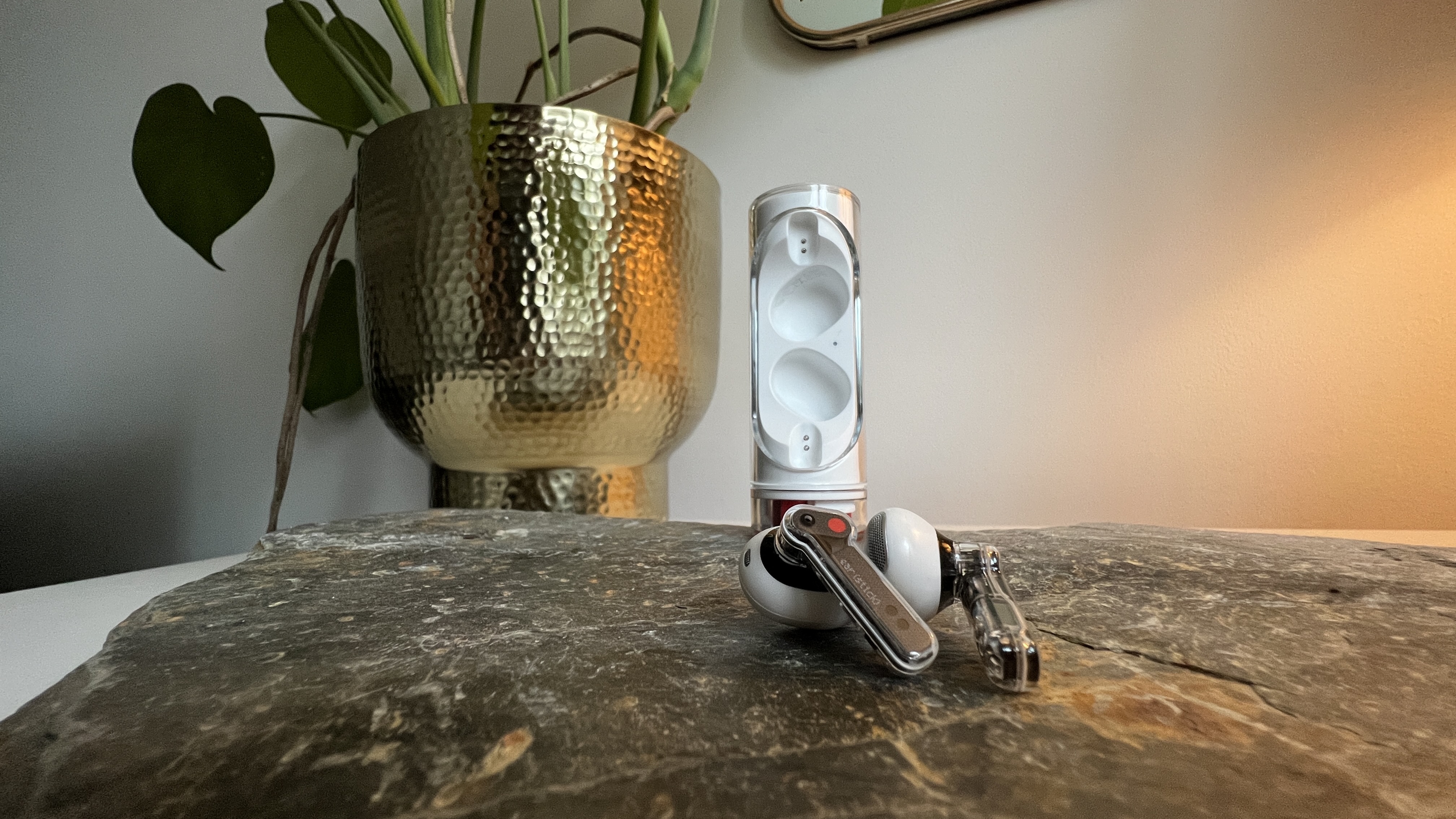
Without battery draining active noise cancellation, the Ear (stick) have some decent stamina: up to seven hours of listening time and three continuous hours of talk time (extended to 29 hours with the charging case).
This isn’t all-day battery life, but more than enough for the average working day with hours of songs and podcasts while you work. Unfortunately, as you might expect from a case design like this, there is no Qi wireless charging. Fast charge is supported, though, and I was able to get an extra couple hours of listing time out of 10 minutes.
Nothing Ear (stick) call quality and connectivity
Just like the ear (1), call quality is solid. Not once did I have to go through the annoying routine of switching to my phone’s earpiece. The three mics did a great job of isolating my voice both indoors and outdoors.
Not only that, but Bluetooth 5.2 ensures a strong connection. I didn’t suffer a single dropout, even when I tested it up to a 30-meter distance from my phone.
Bottom Line
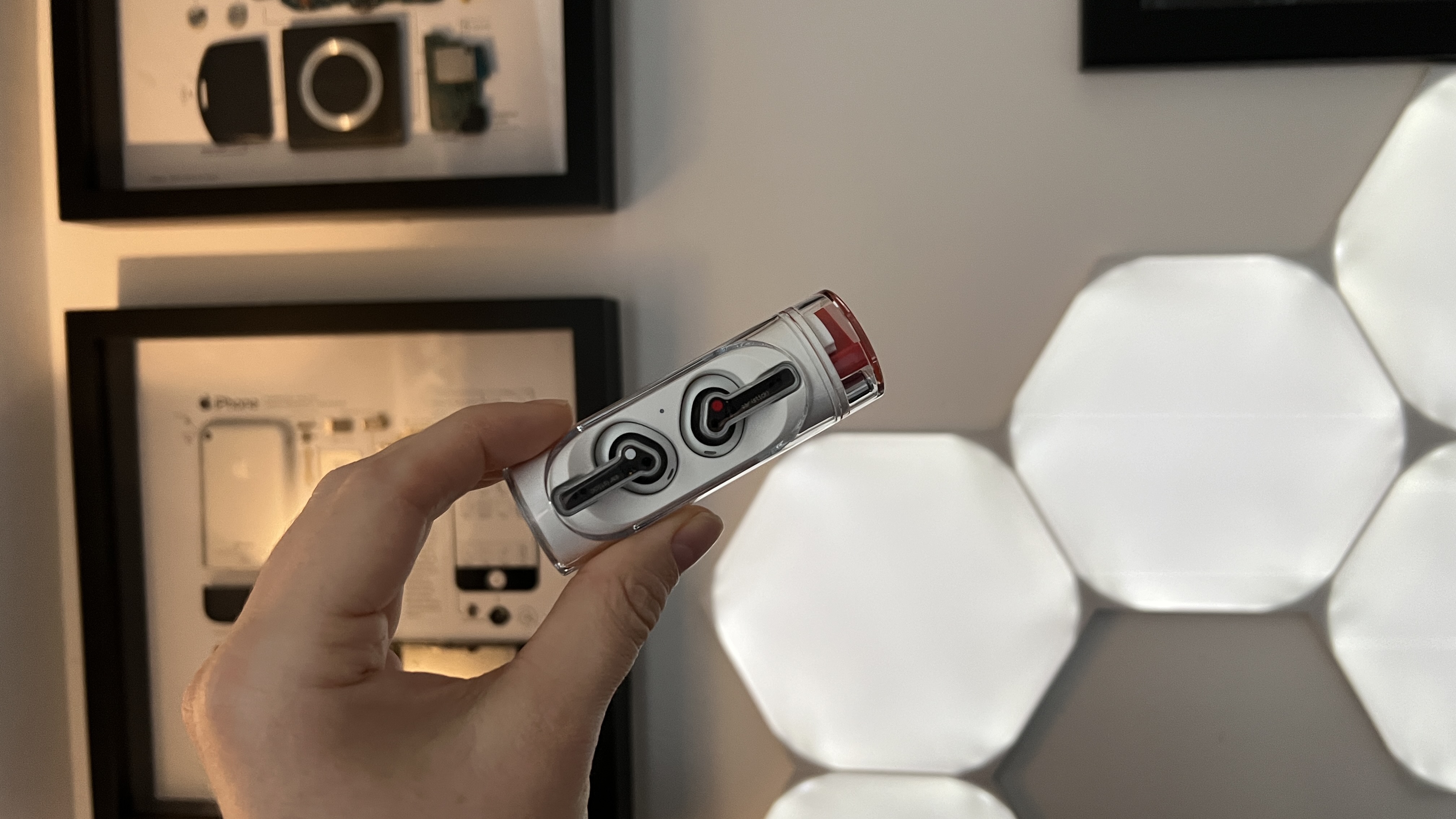
This all adds up to a good pair of earbuds, if you are willing to deal with the fundamental compromises of the half in-ear design.
While detractors see these buds as cheap, tacky and naked, their transparent design offers something unlike anything else out there. On the bright side, they deliver clear callst, have decent battery life and sound satisfactory.
Keep in mind, however, that they only sound great when you’re indoors or somewhere rather quiet; the noise leakage can be a problem. If that’s something you’re prepared to accept in the mission to get a pair of buds that don’t feel intrusive with rubber tips, then go for it! If not, there are other options that pack ANC and isolate the sound much better for cheaper, like our picks for the best cheap noise-cancelling earbuds or a personal favorite, the Soundcore Life P3s.

Jason brought a decade of tech and gaming journalism experience to his role as a writer at Laptop Mag, and he is now the Managing Editor of Computing at Tom's Guide. He takes a particular interest in writing articles and creating videos about laptops, headphones and games. He has previously written for Kotaku, Stuff and BBC Science Focus. In his spare time, you'll find Jason looking for good dogs to pet or thinking about eating pizza if he isn't already.
